Jeffrey C Grossman
from Berkeley, CA
- Also known as:
-
- Jerrfey C Grossman
- Justin Grossman
Jeffrey Grossman Phones & Addresses
- Berkeley, CA
- 60 Hedge Rd, Brookline, MA 02445 • 8472082123
- Alameda, CA
- Urbana, IL
Work
-
Company:Stoddard's, inc
Education
-
School / High School:California State College- Fullerton, CA
-
Specialities:Bachelor of Arts in Communications
Lawyers & Attorneys

Jeffrey Grossman - Lawyer
view sourceOffice:
Stradley Ronon Stevens & Young, LLP
Specialties:
Construction
Securities Litigation
Products Liability and Mass Tort
Professional Liability
Insurance
Fidelity and Surety
Litigation
Securities Litigation
Products Liability and Mass Tort
Professional Liability
Insurance
Fidelity and Surety
Litigation
ISLN:
910548579
Admitted:
1994
University:
St Johns University; Binghamton University, B.A., 1993
Law School:
Dickinson School of Law of the Pennsylvania State University, J.D., 1996

Jeffrey Grossman - Lawyer
view sourceOffice:
Jeffrey C. Grossman
ISLN:
906843916
Admitted:
1973
University:
University of Pennsylvania, B.A., 1970
Law School:
Fordham University, J.D., 1973
Name / Title
Company / Classification
Phones & Addresses
Owner
The Chair Man
Ret Antique Furnishings Crystals & Collectibles · Furniture Repair
Ret Antique Furnishings Crystals & Collectibles · Furniture Repair
20 Arch St, Abington, MA 02351
7818711230
7818711230
Treasurer
JOSEPH SLIFKA CENTER FOR JEWISH LIFE AT YALE, INC
Religious Organization
Religious Organization
80 Wall St, New Haven, CT 06511
PO Box 209077, New Haven, CT 06520
J.h Cohn Llp, Boston, MA 02109
57 Troy Dr, Short Hills, NJ 07078
2034321134
PO Box 209077, New Haven, CT 06520
J.h Cohn Llp, Boston, MA 02109
57 Troy Dr, Short Hills, NJ 07078
2034321134
Treasurer
STODDARD REALTY, INC
Ret Misc Homefurnishings · Ret Misc Homefurnishings Ret Sporting Goods/Bicycles · Mfg Cutlery
Ret Misc Homefurnishings · Ret Misc Homefurnishings Ret Sporting Goods/Bicycles · Mfg Cutlery
50 Temple Pl, Boston, MA 02111
360 Watertown St, Newton, MA 02458
PO Box 95201, Newton, MA 02495
Newton Center, MA 02459
6172444187, 6174264187, 6173578263
360 Watertown St, Newton, MA 02458
PO Box 95201, Newton, MA 02495
Newton Center, MA 02459
6172444187, 6174264187, 6173578263
AGFY LLC
The Chair Man and The Tea Lady
Furniture Repair
Furniture Repair
20 Arch St, Abington, MA 02351
7818711230
7818711230
President
TATE GALLERIES, INC
49 Bishop Dr, Framingham, MA 01701
613 Salem End Rd, Framingham, MA 01701
613 Salem End Rd, Framingham, MA 01701
President
LEONARD MEDICAL SUPPLY, INC
775 Huntington A, Hyde Park, MA 02136
President
LEONARD PHARMACY, INC
302A Ctr St, Jamaica Plain, MA 02130
Resumes

Jeffrey Grossman
view source
Jeffrey Grossman
view source
Professor
view sourceLocation:
Brookline, MA
Work:
Massachusetts Institute of Technology (Mit)
Professor
Professor

Jeffrey Grossman Newton, MA
view sourceWork:
STODDARD'S, INC
Jan 2010 to 2000 STODDARD'S, INC
Jan 2010 to 2000
Assisted President Green Restaurant Association
Boston, MA
Feb 2008 to Jun 2009
Sales and Membership Development Sereflex, Inc
Owings Mills, MD
Sep 2004 to May 2007
Sales and Marketing Consultant, Independent Contractor Sereflex, Inc
Natick, MA
Mar 2005 to Mar 2007
Inside Sales and Design Representative Designs for Comfort
Needham, MA
Jan 2003 to Nov 2004
Sales and Marketing Consultant, Independent Contractor Backsaver Acquisition Corporation
Holliston, MA
Jan 2002 to Dec 2002
Sales and Marketing Consultant, Independent Contractor Aeris USA
Reno, NV
Jan 2001 to Nov 2002
Sales and Marketing Consultant, Independent Contractor Backsaver Products Company
Holliston, MA
1986 to 2001
National Director Sales and Marketing The Back Store
Needham, MA
1978 to 1986
Owner and Operator Leonard Medical Supply
Boston, MA
1971 to 1978
Sales Manager
Jan 2010 to 2000 STODDARD'S, INC
Jan 2010 to 2000
Assisted President Green Restaurant Association
Boston, MA
Feb 2008 to Jun 2009
Sales and Membership Development Sereflex, Inc
Owings Mills, MD
Sep 2004 to May 2007
Sales and Marketing Consultant, Independent Contractor Sereflex, Inc
Natick, MA
Mar 2005 to Mar 2007
Inside Sales and Design Representative Designs for Comfort
Needham, MA
Jan 2003 to Nov 2004
Sales and Marketing Consultant, Independent Contractor Backsaver Acquisition Corporation
Holliston, MA
Jan 2002 to Dec 2002
Sales and Marketing Consultant, Independent Contractor Aeris USA
Reno, NV
Jan 2001 to Nov 2002
Sales and Marketing Consultant, Independent Contractor Backsaver Products Company
Holliston, MA
1986 to 2001
National Director Sales and Marketing The Back Store
Needham, MA
1978 to 1986
Owner and Operator Leonard Medical Supply
Boston, MA
1971 to 1978
Sales Manager
Education:
California State College
Fullerton, CA
Bachelor of Arts in Communications
Fullerton, CA
Bachelor of Arts in Communications
Isbn (Books And Publications)

Diagnostic and Surgical Imaging Anatomy: Musculoskeletal, International Edition
view sourceAuthor
Jeffrey W. Grossman
ISBN #
1931884323
License Records
Jeffrey Grossman
Phone:
9056688674
License #:
13079 - Active
Category:
Health Care
Issued Date:
Jul 6, 1992
Effective Date:
Jan 5, 2016
Expiration Date:
Feb 28, 2018
Type:
Dental
Medicine Doctors

Jeffrey M. Grossman
view sourceSpecialties:
Internal Medicine
Work:
Jeffrey M Grossman MD
920 37 Pl STE 103, Vero Beach, FL 32960
7722994046 (phone), 7722990419 (fax)
920 37 Pl STE 103, Vero Beach, FL 32960
7722994046 (phone), 7722990419 (fax)
Education:
Medical School
Medical College of Georgia School of Medicine
Graduated: 1986
Medical College of Georgia School of Medicine
Graduated: 1986
Procedures:
Vaccine Administration
Electrocardiogram (EKG or ECG)
Electrocardiogram (EKG or ECG)
Conditions:
Abdominal Hernia
Acute Sinusitis
Acute Upper Respiratory Tract Infections
Angina Pectoris
Benign Prostatic Hypertrophy
Acute Sinusitis
Acute Upper Respiratory Tract Infections
Angina Pectoris
Benign Prostatic Hypertrophy
Languages:
English
Description:
Dr. Grossman graduated from the Medical College of Georgia School of Medicine in 1986. He works in Vero Beach, FL and specializes in Internal Medicine. Dr. Grossman is affiliated with Indian River Medical Center.

Jeffrey S. Grossman
view sourceSpecialties:
Physical Medicine & Rehabilitation
Work:
Peachtree Spine Physicians
5555 Peachtree Dunwoody Rd STE G65, Atlanta, GA 30342
4048433323 (phone), 4045745944 (fax)
Peachtree Spine Physicians
711 Canton Rd NE STE 200, Marietta, GA 30060
4048433323 (phone), 4045745944 (fax)
5555 Peachtree Dunwoody Rd STE G65, Atlanta, GA 30342
4048433323 (phone), 4045745944 (fax)
Peachtree Spine Physicians
711 Canton Rd NE STE 200, Marietta, GA 30060
4048433323 (phone), 4045745944 (fax)
Education:
Medical School
Emory University School of Medicine
Graduated: 1997
Emory University School of Medicine
Graduated: 1997
Procedures:
Neurological Testing
Languages:
Chinese
English
Spanish
English
Spanish
Description:
Dr. Grossman graduated from the Emory University School of Medicine in 1997. He works in Atlanta, GA and 1 other location and specializes in Physical Medicine & Rehabilitation.

Jeffrey W. Grossman
view sourceSpecialties:
Radiology
Work:
Treasure Valley Imaging
8800 W Emerald St, Boise, ID 83704
2083735012 (phone), 2083735031 (fax)
8800 W Emerald St, Boise, ID 83704
2083735012 (phone), 2083735031 (fax)
Education:
Medical School
University of Texas Medical Branch at Galveston
Graduated: 2002
University of Texas Medical Branch at Galveston
Graduated: 2002
Languages:
English
Description:
Dr. Grossman graduated from the University of Texas Medical Branch at Galveston in 2002. He works in Boise, ID and specializes in Radiology. Dr. Grossman is affiliated with Treasure Valley Hospital.

Jeffrey F. Grossman
view sourceSpecialties:
Anesthesiology
Work:
Billings ClinicBillings Anesthesiology PC
2800 10 Ave N, Billings, MT 59101
4062483290 (phone), 4062483346 (fax)
2800 10 Ave N, Billings, MT 59101
4062483290 (phone), 4062483346 (fax)
Languages:
English
Description:
Dr. Grossman works in Billings, MT and specializes in Anesthesiology. Dr. Grossman is affiliated with Billings Clinic Hospital.

Jeffrey Wayne Grossman
view sourceSpecialties:
Radiology
Diagnostic Radiology
Pulmonary Disease
Diagnostic Radiology
Pulmonary Disease
Wikipedia References

Jeffrey Grossman
Us Patents
-
Carbon Based Thirty Six Atom Spheres
view source -
US Patent:6939524, Sep 6, 2005
-
Filed:Mar 3, 2000
-
Appl. No.:09/518989
-
Inventors:Charles R. Piskoti - Fenton MI, US
Alex K. Zettl - Kensington CA, US
Marvin L. Cohen - Piedmont CA, US
Michel Cote - Cambridge, GB
Jeffrey C. Grossman - Berkeley CA, US
Steven G. Louie - Berkeley CA, US -
Assignee:The Regents of the University of California - Oakland CA
-
International Classification:C01B031/00
-
US Classification:423445B, 977DIG 1
-
Abstract:A solid phase or form of carbon is based on fullerenes with thirty six carbon atoms (C). The Cstructure with Dsymmetry is one of the two most energetically favorable, and is conducive to forming a periodic system. The lowest energy crystal is a highly bonded network of hexagonal planes of Csubunits with AB stacking. The Csolid is not a purely van der Waals solid, but has covalent-like bonding, leading to a solid with enhanced structural rigidity. The solid Cmaterial is made by synthesizing and selecting out Cfullerenes in relatively large quantities. A Crich fullerene soot is produced in a helium environment arc discharge chamber by operating at an optimum helium pressure (400 torr). The Cis separated from the soot by a two step process. The soot is first treated with a first solvent, e. g. toluene, to remove the higher order fullerenes but leave the C.
-
Mechanism To Reduce The Cost Of Forwarding Pointer Aliasing
view source -
US Patent:7107430, Sep 12, 2006
-
Filed:Nov 14, 2001
-
Appl. No.:09/990798
-
Inventors:Jeffrey P. Grossman - Cambridge MA, US
Jeremy H. Brown - Somerville MA, US
Andrew W Huang - Cambridge MA, US -
Assignee:Massachusetts Institute of Technology - Cambridge MA
-
International Classification:G06F 12/00
-
US Classification:711202, 711216, 711220, 707 1, 707206, 707205, 707200, 707101, 707 10
-
Abstract:Short-quasi-unique-identifiers (SQUIDs) are generated and assigned to the data objects stored in memory. Pointers to a particular data object contain the data object's assigned SQUID. If a data object is moved to a second allocated memory segment, a new pointer to the second allocated memory segment is placed at the original memory segment, so that any pointers to the original memory segment now point to the new pointer. The distribution of SQUIDs is uniform. SQUIDs can be generated by counting, generated randomly, generating through some hashing mechanism, or other means. In comparing two different pointers, it is determined that the two pointers do not reference the same data object if the SQUIDs are different. On the other hand, if the SQUIDs are identical and the address fields of the two pointers are identical, then the two pointers reference the same data object. In addition, a pointer is associated with a migration indicator field which indicates the number of migrations of the referenced data object prior to the pointer being created.
-
Tunable Multiwalled Nanotube Resonator
view source -
US Patent:7915973, Mar 29, 2011
-
Filed:Aug 25, 2006
-
Appl. No.:11/467422
-
Inventors:Alex K. Zettl - Kensington CA, US
Kenneth J. Jensen - Berkeley CA, US
Caglar Girit - Albany CA, US
William E. Mickelson - San Francisco CA, US
Jeffrey C. Grossman - Berkeley CA, US -
Assignee:The Regents of the University of California - Oakland CA
-
International Classification:H03H 9/24
-
US Classification:333186, 333197, 977752
-
Abstract:A tunable nanoscale resonator has potential applications in precise mass, force, position, and frequency measurement. One embodiment of this device consists of a specially prepared multiwalled carbon nanotube (MWNT) suspended between a metal electrode and a mobile, piezoelectrically controlled contact. By harnessing a unique telescoping ability of MWNTs, one may controllably slide an inner nanotube core from its outer nanotube casing, effectively changing its length and thereby changing the tuning of its resonance frequency. Resonant energy transfer may be used with a nanoresonator to detect molecules at a specific target oscillation frequency, without the use of a chemical label, to provide label-free chemical species detection.
-
Nanomechanical Resonance Detector
view source -
US Patent:8567249, Oct 29, 2013
-
Filed:Aug 18, 2009
-
Appl. No.:12/543359
-
Inventors:Jeffrey C. Grossman - Berkeley CA, US
Alexander K. Zettl - Kensington CA, US -
Assignee:The Regents of the University of California - Oakland CA
-
International Classification:G01H 13/00
-
US Classification:73579, 977902
-
Abstract:An embodiment of a nanomechanical frequency detector includes a support structure and a plurality of elongated nanostructures coupled to the support structure. Each of the elongated nanostructures has a particular resonant frequency. The plurality of elongated nanostructures has a range of resonant frequencies. An embodiment of a method of identifying an object includes introducing the object to the nanomechanical resonance detector. A resonant response by at least one of the elongated nanostructures of the nanomechanical resonance detector indicates a vibrational mode of the object. An embodiment of a method of identifying a molecular species of the present invention includes introducing the molecular species to the nanomechanical resonance detector. A resonant response by at least one of the elongated nanostructures of the nanomechanical resonance detector indicates a vibrational mode of the molecular species.
-
Tunable Multiwalled Nanotube Resonator
view source -
US Patent:8573031, Nov 5, 2013
-
Filed:Feb 11, 2011
-
Appl. No.:13/026122
-
Inventors:Kenneth J. Jensen - Berkeley CA, US
Caglar O. Girit - Saint Cloud, FR
William E. Mickelson - San Francisco CA, US
Alexander K. Zettl - Kensington CA, US
Jeffrey C. Grossman - Brookline MA, US -
Assignee:The Regents of the University of California - Oakland CA
-
International Classification:G01H 13/00
G01N 29/02 -
US Classification:73 2406, 73 2401, 977957
-
Abstract:A tunable nanoscale resonator has potential applications in precise mass, force, position, and frequency measurement. One embodiment of this device consists of a specially prepared multiwalled carbon nanotube (MWNT) suspended between a metal electrode and a mobile, piezoelectrically controlled contact. By harnessing a unique telescoping ability of MWNTs, one may controllably slide an inner nanotube core from its outer nanotube casing, effectively changing its length and thereby changing the tuning of its resonance frequency. Resonant energy transfer may be used with a nanoresonator to detect molecules at a specific target oscillation frequency, without the use of a chemical label, to provide label-free chemical species detection.
-
Amorphous Silicon Solar Cells
view source -
US Patent:20110226330, Sep 22, 2011
-
Filed:Aug 11, 2009
-
Appl. No.:13/058992
-
Inventors:Jeffrey C. Grossman - Brookline MA, US
Alexander K. Zettl - Kensington CA, US
Lucas Wagner - Somerville MA, US -
Assignee:THE REGENTS OF THE UNIVERSITY OF CALIFORNIA - Oakland CA
-
International Classification:H01L 31/0384
H01L 31/20
H01L 51/42
H01B 1/04
B82Y 99/00
B82Y 30/00
B82Y 40/00 -
US Classification:136258, 438 96, 2525011, 257E31048, 977948, 977700, 977742, 977840
-
Abstract:The present invention provides novel strategies for mitigating the Staebler-Wronski Effect (SWE), that is, the light induced degradation in performance of photoconductivity in amorphous silicon. Materials according to the present invention include alloys or composites of amorphous silicon which affect the elasticity of the materials, amorphous silicon that has been grown on a flexed substrate, compression sandwiched comprising amorphous silicon, and amorphous silicon containing nanoscale features that allow stress to be relieved. The composites are formed with nanoparticles such as nanocrystals and nanotubes. Preferred are boron nitride nanotubes (BNNT) including those that have been surface modified.
-
Photonic Crystal Solar Cell
view source -
US Patent:20110247676, Oct 13, 2011
-
Filed:Sep 28, 2009
-
Appl. No.:13/121667
-
Inventors:Jeffrey C. Grossman - Brookline MA, US
Alexander K. Zettl - Kensington CA, US -
Assignee:The Regents of the University of California - Oakland CA
-
International Classification:H01L 31/02
H01L 31/042
H01L 31/18
H01L 31/0264 -
US Classification:136244, 136252, 136261, 136260, 438 72, 257E31128
-
Abstract:The present invention provides a photovoltaic cell, which is contained within a photonic crystal structure. The photonic crystal is at least two-dimensional, and contains defects to guide incident light, e.g., sunlight, into a crystal cavity, where the concentrated light is guided into a cavity, preferably a photonic optical cavity, which is also a photovoltaic region comprising a semiconductor heterojunction for forming a photovoltaic current.
-
Nanoscale Solar Cell Configuration
view source -
US Patent:20110253205, Oct 20, 2011
-
Filed:Sep 25, 2009
-
Appl. No.:13/121174
-
Inventors:Jeffrey C. Grossman - Brookline MA, US
Alexander K. Zettl - Kensington CA, US -
International Classification:H01L 51/46
H01L 31/06
H01L 31/02
B82Y 99/00 -
US Classification:136255, 438 88, 257E3111, 977762, 977742, 977948
-
Abstract:The present disclosure is directed to an optimized structure for an exciton-based photovoltaic cell, in which the bulk heterojunction between the electron donor (typically an organic polymeric semiconductor) and an electron acceptor (e.g., silicon or titanium or titania) minimizes the necessary exciton travel distance to the heterojunction in three dimensions. The configuration is arrayed in three dimensions, such that one member of the heterojunction pair, such as the electron acceptor is in the form of a number of nanoscale channels, extending to an electrode. The channels extend through a photovoltaic matrix material in a predetermined three-dimensional configuration.
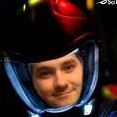
Jeffrey Grossman
view source
Jeffrey Grossman
view source
Jeffrey Grossman
view source
Jeffrey Grossman
view sourceFriends:
Barbara Pillius Elste, Rick Smith, Ron L Deal, Matthew Kass
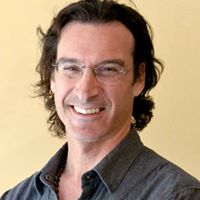
Jeffrey Grossman
view sourceFriends:
Rich Rosenthal, Brad Baruch Roter, Randy Stern, Susan Rubens, Keith Gallant
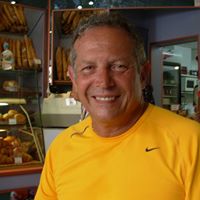
Jeffrey H. Grossman
view source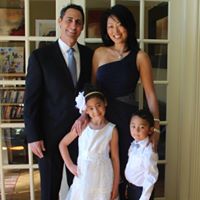
Jeffrey Grossman Atlanta...
view sourceFriends:
Sami Robinson, Julia Horst, William Hoffman, Tracie Militano
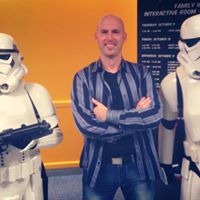
Jeffrey R. Grossman
view sourceGoogleplus

Jeffrey Grossman
Lived:
Brookline, MA
Work:
Massachusetts Institute of Technology - Professor
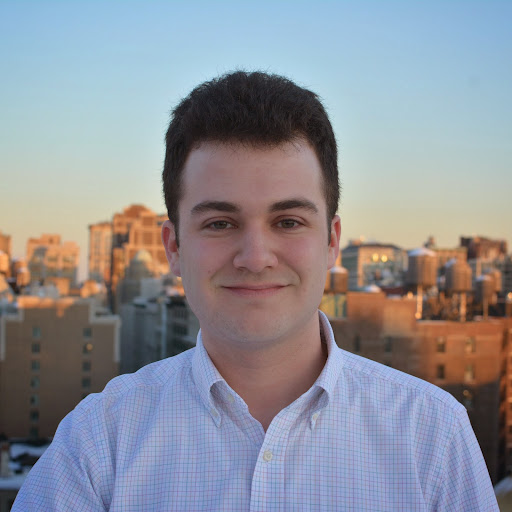
Jeffrey Grossman
Education:
Carnegie Mellon University - Computer Science

Jeffrey Grossman

Jeffrey Grossman
Work:
Wells Motor Company - Business Manager (2006)
Education:
Rutgers University - Animal Physiology & Anatomy, Cornell University - Biology, New Rochelle High Achool - College Prep

Jeffrey Grossman
Flickr
Plaxo

Jeffrey Grossman
view sourceNYC

Jeffrey S. Grossman
view sourceChesterfield, MO
Myspace
Classmates

Jeffrey Grossman
view sourceSchools:
Lancaster Country Day School Lancaster PA 1977-1981
Community:
Linda Jones, Doug Graybill, John Chandler

Jeffrey Grossman
view sourceSchools:
Ridge High School Basking Ridge NJ 1986-1990
Community:
Jacquelin Fahey, John Cushing, Gretchen Decoste

Jeffrey Grossman
view sourceSchools:
Northwood High School Minong WI 1976-1976
Community:
Kent Same, Anna Jokinen

Jeffrey Grossman
view sourceSchools:
Greenwich Country Day School Greenwich CT 1981-1985
Community:
Michael Polke

Jeffrey Robert Grossman
view sourceSchools:
Mamaroneck High School Mamaroneck NY 1987-1991
Community:
George Grant

Jeffrey Grossman
view sourceSchools:
St. Clare School Bronx NY 1981-1985
Community:
Virginia Schaefer, Jana Vatiqi, Karen Delcasale, Patrick Ahearn, Lisa Soli, Helen Dipierro, Clara Dipierro, Bernadette Lombardo, Craig Horn, Angelo Sedacca, Stephen Demartino

Jeffrey Grossman
view sourceSchools:
Wilmington Friends High School Wilmington DE 1967-1971
Community:
Cape Ranken, Luther Latten, John Hall

Jeffrey Grossman
view sourceSchools:
St. Raymond Boys High School Bronx NY 1985-1989
Community:
William Mussumeli
News

Google quietly working on a replacement for Android, called Fuchsia, that's causing some fierce internal squabbling
view source- Switching away from Android could provide Google the opportunity to hit the reset button on any mistakes they believe they made a decade ago, said Jeffrey Grossman, co-founder of messaging app Confide. They might be able to regain some power that theyve ceded to device manufacturers and telecom
- Date: Jul 19, 2018
- Category: Headlines
- Source: Google

Major Advance Towards Practical Application of Solid-State Energy-Storage/Heat ...
view source- The finding, by MIT professor Jeffrey Grossman, postdoc David Zhitomirsky, and graduate student Eugene Cho, is described in a paper in the journal Advanced Energy Materials. The key to enabling long-term, stable storage of solar heat, the team says, is to store it in the form of a chemical change ra
- Date: Jan 11, 2016
- Category: Sci/Tech
- Source: Google

PV Goes 3-D
view source- Two small-scale versions of 3-D photovoltaic arrays were among those tested by Jeffrey Grossman and his team on an MIT rooftop to measure their actual electrical output throughout the day. (Image: Allegra Boverman)
- Date: Mar 28, 2012
- Category: Sci/Tech
- Source: Google

MIT's 3D solar cells take cubism to new energy efficient heights
view source- "I think this concept could become an important part of the future of photovoltaics," says the paper's senior author, Jeffrey Grossman, the Carl Richard Soderberg Career Development Associate Professor of Power Engineering at MIT.
- Date: Mar 28, 2012
- Category: Sci/Tech
- Source: Google
Youtube
Get Report for Jeffrey C Grossman from Berkeley, CA















